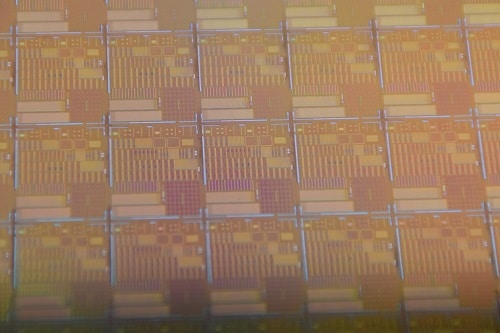These ferroelectric memories are fully compatible with CMOS processes, scalable to advanced nodes and lead-free

World’s first 16-kbit ferroelectric random-access memory (FeRAM) arrays at the 130nm node have now been developed, bringing the energy-saving technology closer to commercialisation. The advanced technology aims to strengthen embedded applications such as Internet of Things (IoT) devices and wearables.
The breakthrough technology includes back-end-of-line (BEOL) integration of TiN/HfO2:Si/TiN ferroelectric capacitors as small as 0.16 µm² while being compatible with solder reflow.
“This ultralow-power, fast, high-endurance, CMOS-compatible BEOL FeRAM memory uses a new HfO2-based ferroelectric material that also is more environmentally friendly than PZT,” said Laurent Grenouillet, an author of the paper. “This demonstration will pave the way toward embedded non-volatile memories at more advanced technology nodes.”
In the work conducted by CEA-Leti, the team observed zero bit failure at the array level. At the same time, the memory window was 2.5 V and the ultrafast switching speed was four nanoseconds. Array-level endurance was 10 million cycles with the array-level data retention also being the same at 125 °C for three hours.
“HfO2-based ferroelectric capacitors change the paradigm of FeRAM,” Grenouillet added. “Unlike PZT-based ferroelectric memories, HfO2-based FeRAM is fully CMOS compatible, and scalable to advanced nodes, in part because HfO2-based ferroelectric films are very thin, typically 10nm thick. They are also lead-free, which is less detrimental to the environment.”
The design and fabrication of the arrays were possible by CEA-Leti’s multidisciplinary expertise in materials development, characterisation, simulation and integration, which also showed power consumption more than 100 times lower than conventional Flash memories.
The work was supported by the EU’s 3eFERRO Consortium project that was designed to produce new ferroelectric material Hf(Zr)O2 that makes FeRAM a competitive NVM candidate for IoT applications.
The results have been reported in a paper titled, “16kbit HfO2:Si-based 1T-1C FeRAM Arrays Demonstrating High-Performance Operation and Solder Reflow Compatibility”.






